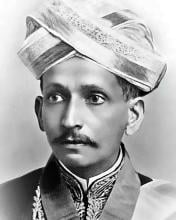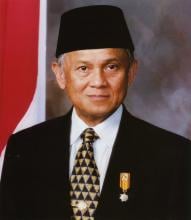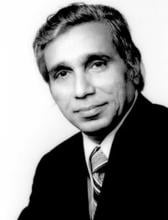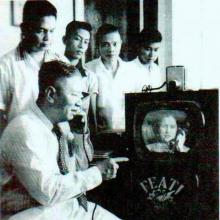Technology
News
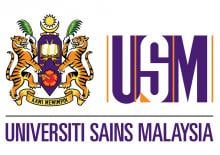
24 Mar 2006
A lot of waste rubber is produced all over the world every year e.g. 10 million tyres are discarded every year. Meanwhile, adhesives are used in almost every industrial workplace with an industry value of 40 billion Euros. This invention turns rubber waste into multifunctional adhesive.

22 Mar 2006
The reliance on computers across the sciences has moved through the gears in the last few years. In a Commentary in this week's Nature Stephen Muggleton describes how automated processes are being used to cope with higher and higher volumes of data and poses questions about human limitations in dealing with increasingly complex information.

22 Mar 2006
The Ministry of Science, Technology and Innovation Malaysia once again endorsed Malaysia Technology Expo 2006 which was held from 23rd until 25th February 2006 at the Putra Trade World Centre, Kuala Lumpur.

14 Mar 2006
'Tongkat Ali', a plant used for traditional medicine in Southeast Asia has also been proven to be effective for the treatment of Malaria and possess anti-cancer and anti microbial properties. The main problem is obtaining a sustainable supply of high quality roots. This research will ensure that this is now a problem of the past.

10 Mar 2006
The problem of possible hazards brought about by earthquakes such as building collapse and loss of lives, especially in major urban metropolis like Metro Manila, must be addressed by city planners, building officials and structural engineers.

09 Mar 2006
Southern Thailand was regarded as a non-seismic-prone region, therefore buildings were not designed for earthquakes, let alone tsunamis. The survival of many non-seismic, non-tsunami resistant buildings shows that it is possible to design buildings to resist moderate tsunamis, with important implications to saving lives (Pictures attached)

09 Mar 2006
This research highlights the use of remote sensing technologies in disaster management, notably post-earthquake/tsunami damage detection due to the 2003 Bam Earthquake and the 2004 Indian Ocean Tsunami, and seismic risk assessment based on land use classification in Metro Manila, the Philippines (Pictures attached).

08 Mar 2006
Nature reveals serious doubts over claims for fusion in collapsing bubbles

07 Mar 2006
Cervical cancer is the second most common cancer afflicting women. The mortality rate can be greatly reduced with mass screening programs, which are not available in many developing countries due to a shortage of pathologists. This invention known as CCAID System will enable mass screening programs to be undertaken in many developing nations.

07 Mar 2006
International Journal of Dynamics of Fluids (IJDF) disseminates technical information in fluid mechanics of interest to researchers and designers in mechanical engineering.

02 Mar 2006
Nature Biotechnology, a leading monthly journal covering the science and business of biotechnology, has announced it will be hosting a series of panel discussions covering issues facing biotech start-ups and biotechnology entrepreneurs.

02 Mar 2006
This technology from Universiti Sains Malaysia won a Gold Award at the recent Malaysian Technology Expo (MTE 2006). For example 74.2 ppm copper in an industrial wastewater sample is reduced to less than 1.0 ppm and more than 95% gold can be recovered from an initial concentration of 500 ppm in 3 hours

01 Mar 2006
This technology from Universiti Sains Malaysia won a Gold Award at the recent Malaysian Technology Expo (MTE 2006). The flight control simulator is used for designing, developing and testing of a flight control system and its control laws/logics for autonomous flight.

01 Mar 2006
Universiti Sains Malaysia’s researchers won 18 medals at the recent Malaysia Technology Expo 2006. They won 2 golds, 9 silvers and 7 bronzes. The team also received two special awards for Best Design and Most Creative Booth.

19 Feb 2006
An image-based 360° panorama and turnorama (object movie) “browser” had been developed for networked mobile devices deployed in collaborative virtual environments (CVEs).

16 Feb 2006
Through the DMC, Keio University aims to transform the way knowledge is provided to society as well as to support the changing modes of intellectual interaction.

15 Feb 2006
Satellite and aerial images used by Google Earth are changing the way we respond to disasters. A Commentary in this week's Nature looks at the very different responses to Hurricane Katrina and the Pakistan earthquake. It asks whether opening such operations to the wider public could allow image updates in real time in disaster situations.

10 Feb 2006
Recent advances in the use of lactic acid for the production of biodegradable thermoplastics and cosmetics (skin care, toiletries, hair care products) have created an impetus in the lactate industries, which spurs the growth of sago industries.

09 Feb 2006
Pakistan Journal of Biotechnology is published biannually by institute of Biotechnology and genetic engineering, University of Sindh, Jamshoro, Pakistan.

02 Feb 2006
Molecular techniques are being used to identify genetic variation within the belian population. This is important for the conservation on this endangered species as populations with little genetic variation are more vulnerable to the arrival of new pests, diseases, pollution, climate and habitat changes or other catastrophic events.

26 Jan 2006
An ergonomically designed mechanical device that can help to increase the rate of union in the healing of open fractures of the tibia has been developed at Unimas. The device is presently being tested in local hospitals.
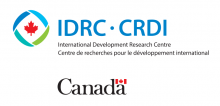
23 Jan 2006
In Asia, distance education using information and communication technologies is proving to be an efficient way of delivering high-quality education. And by making higher education affordable and accessible, it is helping to address equity issues.

19 Jan 2006
Keio University, Japan’s leading university, held an annual Science and Technology Exhibition on December 2nd 2005 which introduced its latest research achievements to the industries.

13 Jan 2006
A study by researchers in Canada has shown that the snap decisions Internet users make about the quality of a web page, in just a twentieth of a second, have a lasting impact on their opinions.

07 Jan 2006
This biannual journal is published by the Animal Nutrition Association of India

04 Jan 2006
The UAV is locally designed, manufactured, integrated and tested. It can be used as an alternative solution to manned aircraft, for operations such as search and rescue, maritime patrol, urban traffic control, surveillance and military applications.

04 Jan 2006
India is set to become a Developed Nation by 2020. Despite all the achievements made in the fields of science and technology, food front, industries, twenty six percent of India's population is below the poverty line with no security of any kind.

30 Dec 2005
After carbon dioxide, methane is the second major green house gas contributing to global warming but methane is 20–40 times more potent as green house gas. This paper suggest various methods of reducing the production of methane in animal farming.

30 Dec 2005
Published by Sher-E-Kashmir University of Agricultural Sciences and Technology – Jammu. Topics include organic farming, methane reduction strategies, impact of insect pollinators, studies in rape, rice, broccoli, cauliflower, fertility, soil and water conservation, efficiency of herbicides and many more.

21 Dec 2005
Spot Electroplater for Lead Frame (SPEL) have been designed to cater to existing problems faced by the rubber masking technique, presently applied in lead frame manufacturing industries.
Researchers
Sorry, no researchers coming up for this topic.
- « first
- ‹ previous
- 1
- 2
- 3
- 4
Giants in history
Sir Mokshagundam Srinivasa Shastry Vishveshwarayya (15 September 1860 – 14 April 1962) is widely regarded as India’s most outstanding engineer. In a career that spanned almost his entire life, Vishveshwarayya played a pivotal role in several engineering projects, including designing the Krishnarajasagara dam that is still the source of irrigation and drinking water for parts of Karnataka today.
Physicist Narinder Singh Kapany (31 October 1926 – 4 December 2020) pioneered the use of optical fibres to transmit images, and founded several optical technology companies. Born in Punjab, India, he worked at a local optical instruments factory before moving to London for PhD studies at Imperial College. There, he devised a flexible fibrescope to convey images along bundles of glass fibres.
Bacharuddin Jusuf Habibie (25 June 1936 – 11 September 2019) was an Indonesian engineer who was President of Indonesia from 1998 to 1999.
A Japanese surgeon, Tetsuzo Akutsu (20 August 1922 – 9 August 2007) built the first artificial heart capable of keeping an animal alive.
Fazlur Rahman Khan (3 April 1929 – 27 March 1982) was a Bangladeshi-American structural engineer and architect who invented the tube principle, which formed the basis for modern skyscraper design.
Lin Lanying (7 February 1918 – 4 March 2003) was a Chinese material engineer remembered for her contributions to the field of semiconductor and aerospace materials. Lanying was born into a family who did not believe in educating girls and she was not allowed to go to school.
Gregorio Y. Zara (8 March 1902 – 15 October 1978) was a Filipino engineer and physicist best remembered for inventing the first two-way video telephone. Zara’s video telephone invention enabled the caller and recipient to see each other while conversing, laying the foundation for video-conferencing


